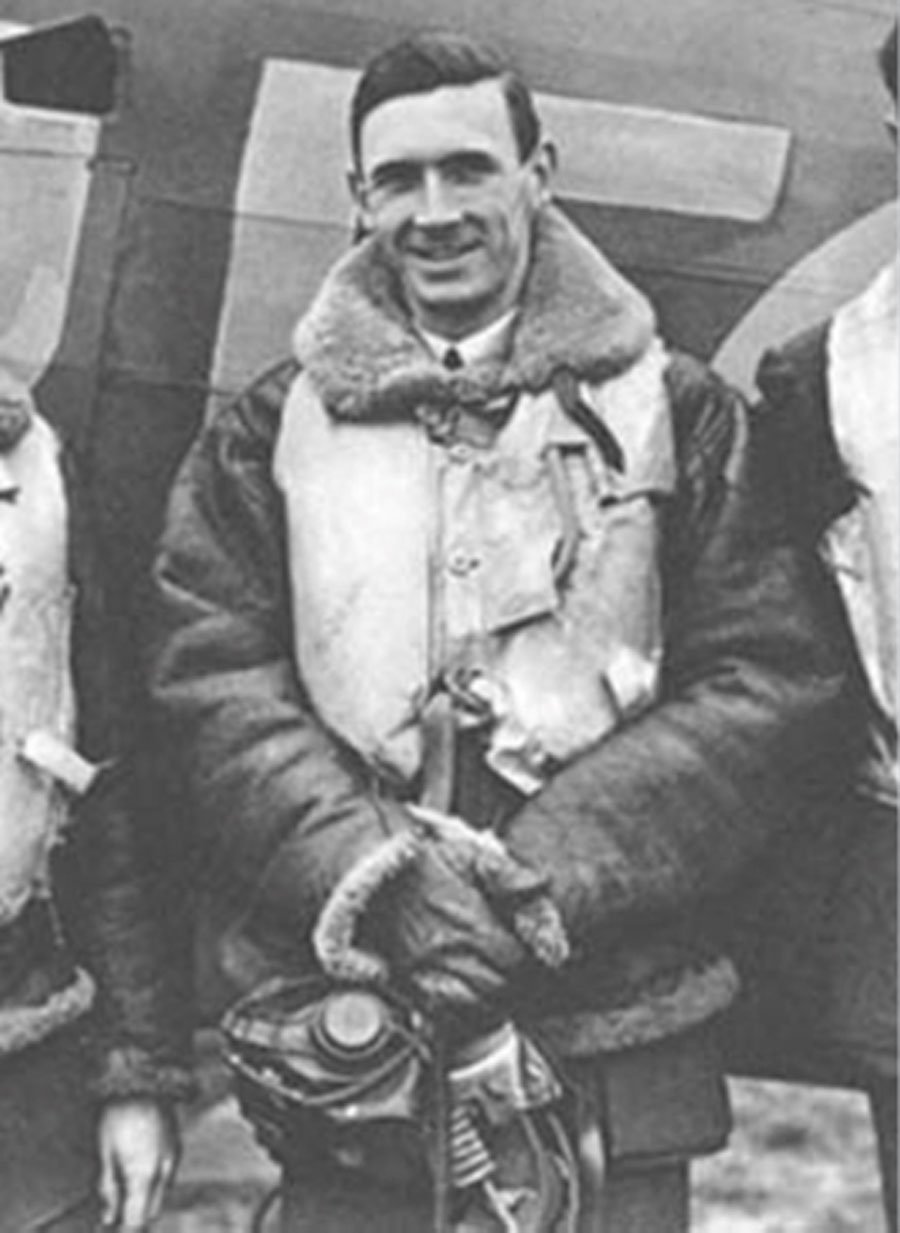AN RAF OFFICER’S sighting over the United States
“I was told there were dozens of saucers directly overhead. Sceptically, I looked up and, to my intense surprise, I saw them too – little silver discs very high up, glinting brightly in the sun and moving across the sky at a terrific speed.”
Flight Lieutenant John (“Johnnie”) Kent fought in the Battle of Britain as a Flight Commander with No.303 Squadron, one of the Polish-crewed units in the RAF. Ending the war as a Wing Commander, he became a test pilot and as an exchange officer joined the All-Weather Flying Division at Wright-Patterson AFB in 1951. Whilst there, he was witness to a UFO and a report of this incident can be found in the Project Blue Book files.
(HMSO, public domain)
JOHNNIE KENT WAS a famous wartime RAF fighter pilot, who had fought with a Polish-crewed squadron in the Battle of Britain and then progressed through the ranks, ending the war as a Wing Commander. He remained in the RAF after the war, becoming a test pilot and was eventually offered the chance to take up a temporary exchange posting at Wright-Patterson AFB, where he joined the All-Weather Flying Division. In his 1971 autobiography One of the Few: A Triumphant Story of Combat in the Battle of Britain, he mentioned flying saucers in connection with Wright-Patterson:
“During my tour with the USAF a lot of publicity was being given to Flying Saucers, or in Service parlance, ‘Unidentified Flying Objects’. The air force had investigated a great many of the reports of the sightings of the saucers and I was privileged in being permitted to read a summary of the reports, the investigations and the findings. Although a rather larger number than I would have imagined remained unexplained, for most of the cases a perfectly ordinary answer had been found. One day, however, I noticed people on the base getting quite excited and many were pointing upwards so I approached one group and asked what was happening. I was told there were dozens of saucers directly overhead. Sceptically, I looked up and, to my intense surprise, I saw them too – little silver discs very high up, glinting brightly in the sun and moving across the sky at a terrific speed. Fascinated, I watched them and made a mental note never to disbelieve anything ever again and then my eyes focussed on one of them. They were dandelion seeds about fifteen feet up.” (from John A. Kent, One of the Few: A Triumphant Story of Combat in the Battle of Britain, 1971 (Scribd edition))
However, one thing omitted from Johnnie Kent’s book was that he had witnessed an actual UFO whilst serving at Wright-Patterson, and a record of this event exists within the Project Blue Book files. In the early hours of 7th March 1952, Wing Commander Kent was flying as a co-pilot in a C-54 Skymaster transport from Muroc, California to Wright-Patterson AFB. The relevant Air Intelligence Information Report takes up the story from that point:
“At 0100, halfway between Tulsa and Claremore [Oklahoma], a very bright light was observed at 1 o’clock position moving away from right to left at the same altitude as the airplane. The object appeared to be another aircraft with a very bright light on it. As the object passed through the 12 o’clock position, it went out for one second and came on again. There were no navigation lights observed. When it passed to the left, it seemed to lose altitude and went out two more times. As it lost altitude, it finally went completely out. The weather was clear. Wing Commander Kent was the only one to observe the object. He did not bring it to the attention of the pilot. No interception or identification was made. Wing Commander Kent made the statement that the object might have been another aircraft.” (Unidentified Flying Object, Air Intelligence Information Report, prepared by Wright Air Development Center, Wright-Patterson AFB, 17th March 1952.)
It is interesting that an RAF officer who had seemingly gone out of his way to dismiss the notion of “flying saucers” in his memoirs had in fact been involved in an encounter nearly twenty years earlier. How many other airmen – famous or otherwise – had witnessed events such as Johnnie Kent’s and yet for whatever reason decided not to comment publicly on them?


